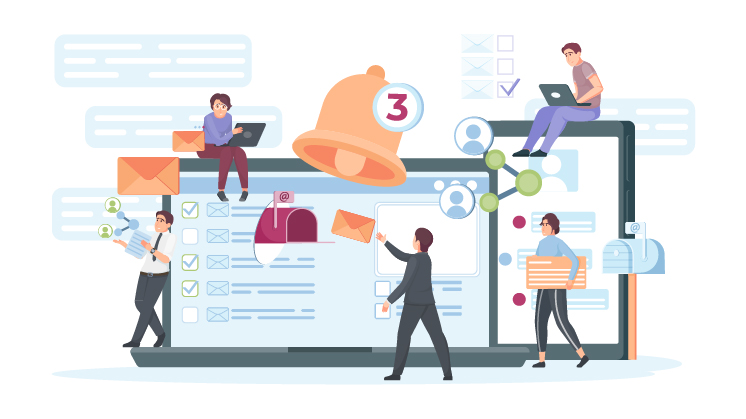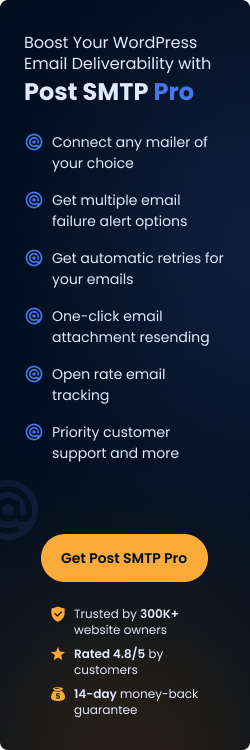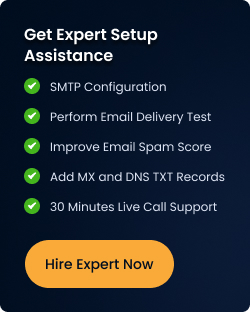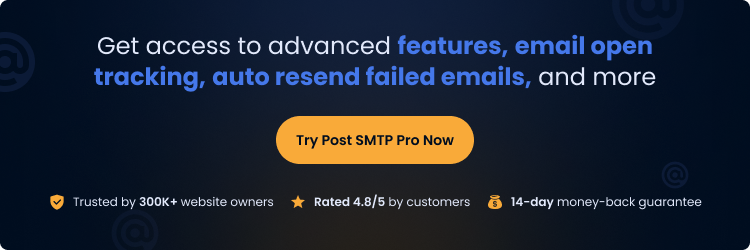Email marketing is a digital marketing strategy that has been around for decades. Despite the rise of social media and other communication channels, email remains an incredibly effective way to reach potential customers and clients. This article will cover the basics of email marketing, including its definition, various strategies, and tools to get started.

Introduction To Email Marketing
Email marketing is a digital marketing strategy that involves sending commercial messages to a group of people via email. Email marketing aims to build relationships with customers and prospects, increase brand awareness, drive sales, and generate leads. Email marketing is often used with other digital marketing tactics, such as social media marketing, search engine optimization (SEO), and content marketing.
Email marketing is often thought of as spamming people’s inboxes with unwanted messages. However, effective email marketing is permission-based, meaning that recipients consent to receive emails from the sender. Permission-based email marketing is more likely to be opened and clicked on by recipients than unsolicited emails.
The Role of Email in Marketing
An Email has been around for a while. It was introduced in 1971. Email marketing is more popular than ever despite being 50 years old. Email is a better digital marketing channel than social media, even though social media should be included.
86% of customers expect promotional emails from businesses at least once a month, and 15% want them daily, according to Hubspot.
Email is the fastest way to promote a sale, inform clients of company news, or remarket to existing customers. Email marketing strategies provide for more customization than social media. Finally, email marketing’s ROI and reach are substantially higher than rival mediums’. This is why startups benefit from email marketing. Email marketing’s immediate, personalized access to target consumers’ inboxes is its strength and profitability.
E-mail Marketing: How To Maximise Its Potential
There are several strategies that businesses can use to utilize email marketing effectively. Here are a few:

Welcome emails:
One of the key emails you will send new subscribers is a “welcome” email. You will receive welcome emails after providing an online retailer with your email address. These emails will most likely appear in your inbox after creating an account or subscribing to a newsletter.

Newsletters:
Create and distribute newsletters on a consistent basis to keep your email list up-to-date. The most recent corporate news, upcoming products or services, and other relevant information, such as blog posts or business-related news, can all be included in the newsletters you send.

Promotional emails:
Send promotional emails to your email list to advertise new products or services, upcoming sales, or exclusive offers. Sending out promotional emails is a simple strategy for increasing brand awareness. Promotional emails aim to raise brand recognition, boost sales, and strengthen consumer loyalty.

Cart abandonment emails:
Email customers who have abandoned items in their shopping carts to remind them to complete their purchases. In the world of e-commerce, one way to get customers to finish their purchases is to remind them about their abandoned carts through email. These emails may be pre-programmed reminders to the buyer to finish their transaction by a certain date.

Re-engagement emails:
Send emails to subscribers who haven’t engaged with your emails in a while to re-engage them with your brand. Sending out re-engagement emails gives you the opportunity to win back unengaged subscribers and get them to start opening and clicking the links in your emails once more.

Interactive Emails:
QR codes serve as a powerful tool to elevate user engagement while seamlessly connecting the realms of the digital and physical. A swift scan grants recipients access to exclusive content, promotions, or even the chance to participate in interactive contests. This not only enhances the interactivity of your emails but also reignites their interest in your brand, making them more captivating than ever.
Tools to Get Started:
Many email marketing tools are available that can help businesses get started with email marketing. Here are a few popular options:
Sendinblue:
When it comes to sending email campaigns, Sendinblue is ideally suited for smaller businesses with less complicated requirements. Among its various functions are a client relationship management system, a real-time chat function, and SMS capabilities. There is a free version, but paid subscriptions start at $25 per month. As a WordPress user, you’re in luck, as several SMTP plugins allow you to configure WordPress’ outgoing mail server (SMTP) without shifting any code. Post SMTP is a cutting-edge WP Mail SMTP plugin that helps and improves the email deliverability of your WordPress site.
Mailchimp:
Mailchimp is a marketing automation tool that enables users to build, send, and review email and advertising campaigns that they have performed. The software enables you to view all aspects of a campaign, manage subscribers and people who want to unsubscribe, track emails, view success and click-through rates, and generate custom reports. Mailchimp gives you the ability to create your own campaigns and templates, in addition to providing a vast selection of campaigns and templates that have already been developed.
ActiveCampaign:
Activecampaign is an email marketing solution that allows organizations to develop and distribute email campaigns, manage their email list, and track their email marketing KPIs. Activecampaign is equipped with marketing automation tools that enable organizations to automate their email marketing campaigns, and these functions are included with the software.
Benefits of Email Marketing:
Email marketing is a powerful tool that has been around for decades and continues to be a key part of any successful digital marketing strategy. In this section, we will delve into email marketing in more detail, including the benefits of email marketing, how to create an effective email marketing campaign, and best practices for email marketing.

Email marketing offers several benefits for businesses, including:
Cost-effective:
Email marketing is a cost-effective way to reach potential customers and clients. Many email marketing tools are available for free or at a low cost, making it a great option for businesses on a budget.
Targeted Audience:
Email marketing allows businesses to send targeted messages to specific groups of people. By segmenting your email list, you can send personalized messages more likely to resonate with recipients.
Measurable Action:
Email marketing is highly measurable, allowing businesses to track open rates, click-through rates, and other metrics to evaluate the effectiveness of their campaigns. Simply navigate to your email marketing software dashboard to review your campaign data.
Scalable Strategies:
Email marketing is easily scalable, allowing businesses to send emails to a few hundred people or a few hundred thousand people with just a few clicks. To overcome the challenges of scaling your email marketing, you need to know the big picture and use processes that can be scaled up.
How To Write A Marketing Email: –
Write a marketing email that will grab your audience’s attention and increase your chances of converting them into customers.
1. Create a Catchy Subject Line:
When someone opens your email, the subject line will be the first thing they see. It is important to come up with an interesting subject line that will make them want to open your email. Some ways to make a subject line catchy are to keep it short and to the point, to use action-oriented language, and to make it sound like time is running out.
2. Focus on Benefits, not Features:
When writing your email, focus on the benefits of your product or service instead of its features. Show how your product or service can solve a problem or meet your audience’s needs. This will make your email more interesting and make it more likely that the people who get it will do what you want them to.
3. Keep it Short and Sweet:
People get a lot of emails every day, so your marketing email should be short and to the point. Use short paragraphs, bullet points, and subheadings to make the text easy to read. This will also help make sure that your readers don’t lose interest in your email before it’s over.
The Keys to a Successful Email Marketing Campaign: –
Creating an effective email marketing campaign involves several steps:
1. Set your goals:
Set your goals: Before you start creating your email campaign, define your goals. Are you trying to drive sales, generate leads, or increase brand awareness?
2. Build your Email list:
Building an email list is essential for email marketing. Encourage website visitors to sign up for your email list, offer incentives for signing up, and promote your email list on your social media channels.
3. Choose an Email Marketing Tool:
Choose an email marketing tool that meets your needs and budget. Look for features such as email templates, list segmentation, and analytics tracking.
4. Create your Email:
Create a visually appealing email with a clear call-to-action. Use personalization and segmentation to make your email more relevant to your recipients.
5. Use a Clear Call-to-Action:
Include a clear call-to-action in your emails to encourage recipients to take action.
6. Optimize for Mobile:
Make sure your emails look good on mobile devices, as more and more people are checking their email on their phones.
7. Test your Email:
Before sending your email, test it to ensure it looks good on different devices and email clients. Test different subject lines, email content, and sending times to see what works best.
8. Analyze your Results:
After you send your email, analyze the results to see how it performed. Look at open rates, click-through rates, and conversion rates to evaluate the effectiveness of your campaign.
Conclusion:
Email marketing is valuable for businesses looking to build relationships with customers and prospects, increase brand awareness, drive sales, and generate leads. Creating an effective email marketing campaign involves setting goals, building an email list, choosing an email marketing tool, creating a visually appealing email, testing your email, and analyzing your results.
To get the most out of your email marketing campaigns, follow best practices such as building a permission-based email list, personalizing your emails, using a clear call-to-action, optimizing for mobile, and testing and analyzing your campaigns.
FAQs:
Where does email marketing fit into the bigger picture?
Email marketing is a valuable digital marketing strategy that can help businesses build relationships with customers and prospects, increase brand awareness, drive sales, and generate leads.
What Is Permission-Based Email Marketing?
Effective email marketing is permission-based, meaning that recipients consent to receive emails from the sender.
What are the different email marketing types?
Businesses can use a variety of email marketing strategies, including welcome emails, newsletters, promotional emails, cart abandonment emails, and re-engagement emails.
What are the different types of email marketing tools?
Many email marketing tools are available that can help businesses get started with email marketing, including Mailchimp, Constant Contact, Campaign Monitor, HubSpot, and ActiveCampaign.


